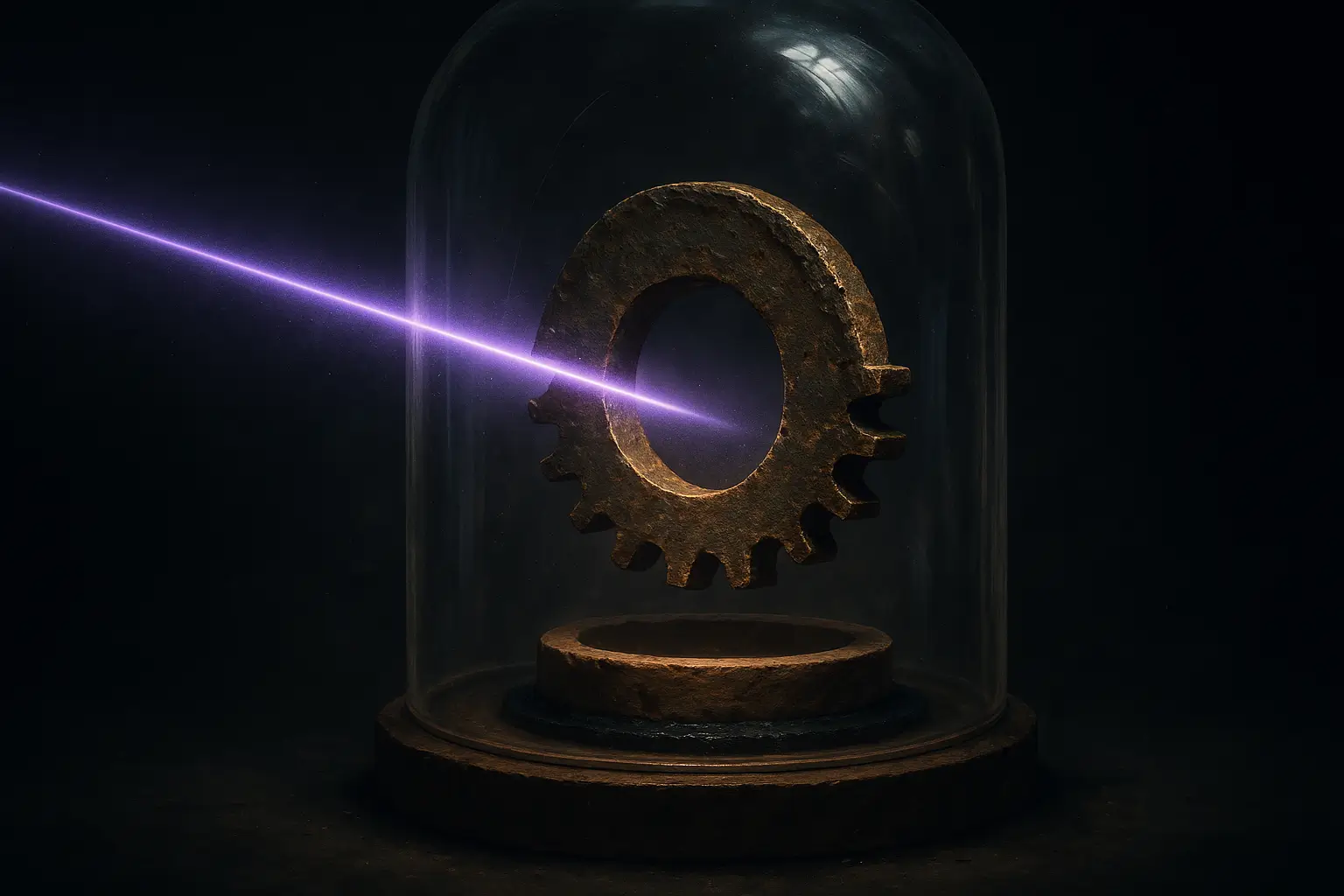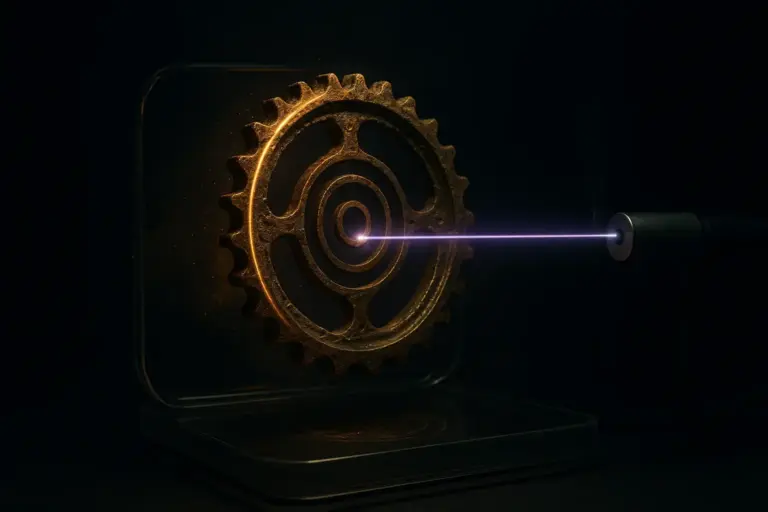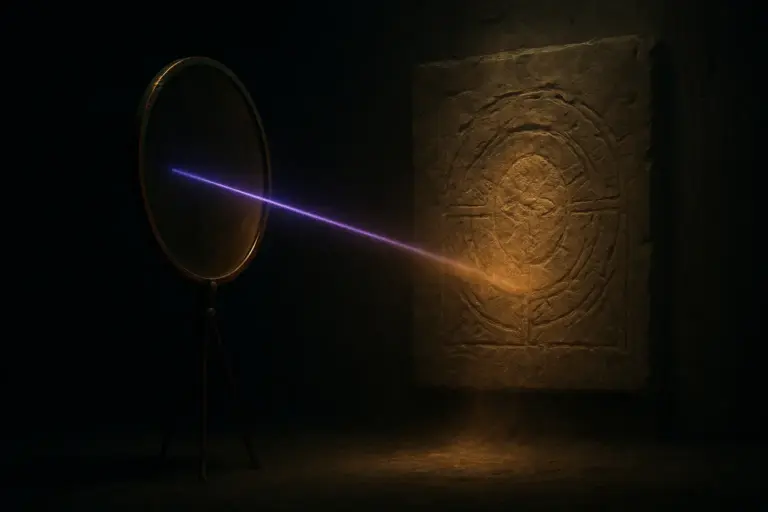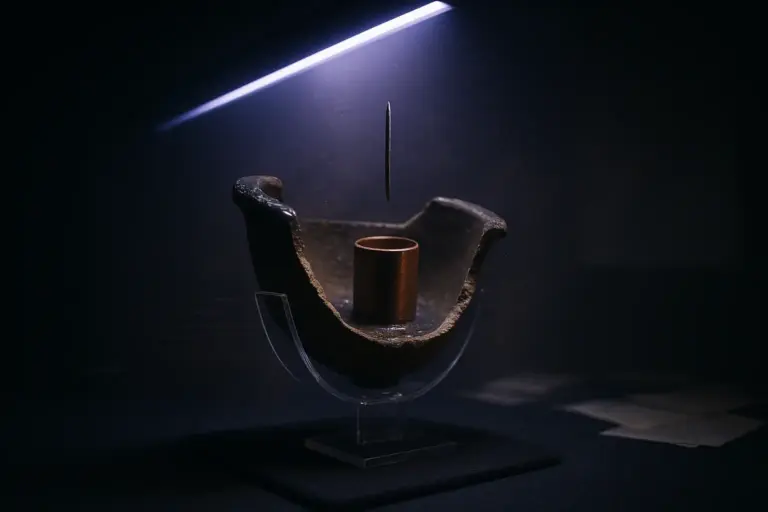Ancient Advanced Technology: A Case Study of Out-of-Place Artifacts
Bronze gears and clay jars under review suggest ancient advanced technology, but the record shows pockets of high craft, not a lost system.
The bronze sits under glass, corroded into a reef of teeth and shadows. A jar, clay-sour, once sealed with bitumen, waits in the same hush. The contradiction is cold to the touch: clockwork precision and possible electrochemistry centuries before our timelines allow, the terrain where ancient advanced technology is supposed not to exist. The labels are careful. The dates are older than comfort. Somewhere between fragments and captions, a page feels missing—either never written, or removed without a trace.

Bronze gears recovered: the Hellenistic mechanism surfaces
Recovered from a first-century BCE shipwreck off Antikythera, the mechanism’s surviving plates and gear trains are copper alloy, inscribed, and boxed once in wood. Radiographs and CT scans reveal on the order of three dozen interlocking gears that drove dials for lunar phases, eclipse cycles, and calendar tracks—a Greek geared calculator for celestial timekeeping rather than a general machine. Reconstructions indicate models of the Metonic and Saros cycles, with differential gearing approximating lunar anomaly; performance analyses show surprising fidelity within the limits of worn teeth and incomplete trains (Source: Britannica, 2024-10-24, Antikythera mechanism overview).
Recent research teams modeled the device’s front display, testing how well it could track known astronomical events. Digital simulations suggest workable predictions when tuned to ancient parameters, though uncertainties remain where fragments do not survive (Source: Smithsonian Magazine, 2024-04-18, accuracy assessments and simulations). A university-led effort proposed a plausible gear architecture to reconcile inscriptional clues with motion constraints, anchoring a path between speculation and mechanism (Source: University College London, 2021-03-12, modeling the device).
Greek geared calculator under starlight: reconstruction limits
Field notes emphasize what is known: maritime context, Hellenistic inscriptions, astronomical gearing. What is not known is kept plain: missing plates, uncertain input mechanism, potential non-surviving pointers for additional displays. Together, these constraints outline a device of specific brilliance rather than a universal engine—a calibrated instrument, not a prophecy in bronze. Across this records beneath the timeline, claims that the mechanism proves sweeping ancient advanced technology flatten both precision and context. The verifiable marvel is narrower and more human: expert metalwork and astronomical literacy concentrated in a small workshop lineage.
“One file was missing—the one that mattered.”
Clay jar, copper, and iron: the Parthian jar interrogated
In Baghdad’s assemblage, the clay vessel, copper cylinder, and iron rod—once sealed with bitumen—have been framed as a galvanic cell. Laboratory replications can produce small voltages with an acidic electrolyte, yet sustained application remains unproven. No wires, switches, or ancillary devices have been recovered with the jar, and plating claims lack corroborating infrastructure in the archaeological layers (Source: BBC Science Focus, 2023-07-12, balanced review of the battery hypothesis).
Competing readings assign the jar prosaic roles: a storage container, a holder for scrolls or papyri, or a ritual element from Parthian contexts. Engineering analyses note that even if a proto-electricity effect was incidental, there is no evidence of repeatable deployment as a power source—no grid, no tool ensemble, no standardized manufacture (Source: Interesting Engineering, 2024-11-06, overview of alternative interpretations). Here, within the lost tech file, the working uncertainty is methodological: without secure excavation notes and a documented chain of context, the Parthian jar remains a lesson in caution.
Galvanic cell hypothesis versus utilitarian container
It may demonstrate materials that could generate a current, but evidence for purpose-built electrical intent is not in the record. The gap matters because extraordinary classification demands convergent documentation—context, replication, and use-wear—before we file an object under ancient advanced technology.
From OOPArts to archives: the record resists overreach
Institutions and specialists repeatedly separate demonstrated function from compelling possibilities. For the Antikythera device, archival inscriptions and computed gearing support an archaeoastronomy device with calendar outputs; for the jar, absence of corroboration tempers the allure of a battery. In both cases, museum labels and peer reviews trail public fascination, and that lag is where out-of-place artifacts proliferate.
The best-evidence critique is simple: extraordinary classification demands convergent documentation—context, replication, and use-wear—before we file an object under ancient advanced technology. Where those pillars are present, timelines bend; where they are missing, narratives run faster than the ledger. The pattern recurs across alleged OOPArts: when you look inside the gears and jars, domain-specific sophistication appears—not universal mastery, but pockets of high craft clustered in workshops, libraries, and port cities.
“The signal was there. The system was not.”
Reframing ancient engineering as local high craft: signals recalibrated
Reframed, these cases point to pockets of high craft—domain-specific sophistication clustered in workshops, libraries, and port cities. A Hellenistic mechanism is not evidence of universal classical computation, but of a lineage that translated ephemerides into gear ratios. A Parthian jar with copper and iron teaches materials literacy, even if not an electrical tool set.
This recalibration matters when assessing other alleged OOPArts. Ask for inscriptions that specify function, for tool marks that match theoretical use, for adjacent finds that sketch a system. If the pattern holds—concentrated brilliance with fragile transmission—our maps of capability get sharper without inflating claims of ancient advanced technology (Source: World Archaeology, 2021-07-22, technical reconstruction feature).
Sources unsealed: institutional records and tested syntheses
Primary
• UCL press office summary of modeling work on the Antikythera gear architecture and display logic, anchoring a university-backed reconstruction effort (Source: University College London, 2021-03-12, official news release).
Note on limitations
• A publicly accessible, authoritative catalog entry from the Iraq Museum for the so-called Baghdad Battery could not be verified at time of writing; this gap limits certainty about provenience and context.
Secondary
• Encyclopedic overview of the Antikythera mechanism’s materials, functions, and discovery context (Source: Britannica, 2024-10-24, Antikythera mechanism).
• Reporting on computational tests and practical accuracy of reconstructions (Source: Smithsonian Magazine, 2024-04-18, simulation findings).
• Technical feature with expert commentary and reconstruction snapshots (Source: World Archaeology, 2021-07-22, the Antikythera Mechanism).
• Critical review of the Baghdad Battery’s electrical hypothesis and competing interpretations (Source: BBC Science Focus, 2023-07-12, was it really a battery).
• Engineering synthesis of material evidence and non-electrical uses for the Parthian jar (Source: Interesting Engineering, 2024-11-06, context and alternatives).
Final transmission: echoes of ancient engineering in the dark
Light spills across pitted bronze and a clay lip ringed with old bitumen. The room hums with dehumidifiers and the soft tick of a security monitor. What survives tells us enough to look again without needing to dream beyond the gears and jars at hand. Signal ends—clarity remains. Navigate further via Home, Hidden History, Lost Technologies.
FAQ decoded: reading the trail of lost technologies
What does the Antikythera mechanism reveal about ancient advanced technology
It demonstrates concentrated expertise in astronomy translated into precision gearing and dial work. The device models cycles like Metonic and Saros rather than serving as a general machine. Source: Britannica, 2024-10-24, britannica.com/topic/Antikythera-mechanism
Was the Baghdad Battery a real example of proto-electricity
Replications show a small voltage is possible with an acidic electrolyte, but corroborating tools and infrastructure are absent. The jar’s function may be non-electrical, such as storage or ritual. Source: BBC Science Focus, 2023-07-12, sciencefocus.com/science/was-the-baghdad-battery-really-a-battery
What limits our certainty about these out-of-place artifacts
Incomplete fragments and missing excavation records constrain definitive assignments of purpose. Scholars rely on inscriptions, wear patterns, and system context to avoid overreach. Source: University College London, 2021-03-12, ucl.ac.uk/news/2021/03/scientists-reveal-mechanics-ancient-greek-device
They Don’t Want You to Know This
Join the society of the curious. Get early access to leaked findings, hidden knowledge, and suppressed discoveries — straight to your inbox, before they vanish.




